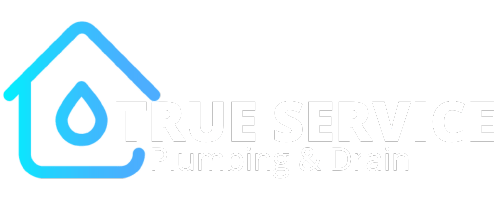Did you know that even a small, unnoticed water leak can waste hundreds of gallons of water every year? If you want to check for water leaks in your house, you need to know where to look and how to spot the signs before they turn into costly problems.
Left undetected, leaks can cause severe water damage, lead to mold growth, and hike up your water bill.
This guide will walk you through the best ways to inspect your home for leaks, from simple DIY methods to knowing when it’s time to call a plumber.
Let’s dive in and help you prevent unnecessary water waste and expensive repairs!
Why ITs Essential To Check for Water Leaks in Your house
Water leaks are more than just an inconvenience—they can have serious financial and structural consequences. Here’s why regular leak checks are crucial:
- Save Money – An undetected leak can lead to skyrocketing water bills.
- Prevent Damage – Water can weaken floors, walls, and foundations over time.
- Avoid Mold & Mildew – Excess moisture leads to hazardous mold growth.
- Conserve Water – Small leaks add up, wasting gallons of water daily.
By routinely checking for leaks, you can protect your home and wallet from unnecessary damage.
Who Is Responsible for Fixing Water Leaks?
If you own your home, the responsibility of detecting and repairing leaks falls on you.
However, if you’re renting, here’s how responsibility is typically divided:
- Homeowners: Responsible for all leak detection and repairs.
- Landlords: Usually cover major plumbing repairs, but minor leaks should be reported immediately.
- Tenants: Should notify the landlord as soon as they notice a leak to prevent worsening damage.
If you’re unsure, check your lease agreement or local tenant laws.
Common Signs of a Water Leak
You don’t always need to see dripping water to know you have a leak.
Here are the most common indicators:
- Unexpected Increase in Water Bills – If your bill spikes without increased usage, a leak may be to blame.
- Water Stains – Yellow or brown stains on walls and ceilings indicate leaks behind surfaces.
- Damp or Musty Odors – Hidden moisture promotes mold and mildew, which create strong odors.
- Decreased Water Pressure – A leak in your pipes can lower water pressure throughout your home.
- Running Water Sounds – If you hear running water when all fixtures are off, a leak might be present.
When Should You Check for Water Leaks In Your House?
Being proactive can save you from costly repairs.
Here are the best times to check for leaks:
Monthly – A quick check of faucets, toilets, and under-sink pipes can prevent small leaks from worsening.
Seasonally – Cold weather can cause pipes to freeze and burst, while summer heat can expand and stress plumbing.
Before Buying or Selling a Home – A thorough leak inspection ensures there are no hidden plumbing problems.
After Noticing a Spike in Water Bills – If your usage habits haven’t changed but costs have increased, check for leaks immediately.
Where to Look for Water Leaks in Your House
Leaks can occur in multiple areas of your home.
Here’s where to check:
1. Kitchen & Bathroom
- Look for water pooling under sinks.
- Inspect around the base of your toilet.
- Check for dripping faucets and showerheads.
2. Basement & Crawl Spaces
- Look for damp spots or mold on walls and floors.
- Check exposed pipes for rust or moisture.
- Monitor sump pump performance.
3. Ceilings & Walls
- Watch for water stains, peeling paint, or warped surfaces.
- Feel for damp patches, especially after heavy rain.
4. Yard & Exterior
- Check your lawn for unusually soggy areas.
- Inspect hose connections for leaks.
- Examine your foundation for cracks or water pooling.
How to Check for Water Leaks: A Step-by-Step Guide
1. Use Your Water Meter
- Turn off all faucets and water-using appliances.
- Locate your water meter and note the reading.
- Wait 1-2 hours without using water, then check the meter again.
- If the reading changes, you likely have a hidden leak.
2. Perform the Toilet Dye Test
- Add a few drops of food coloring into the toilet tank.
- Wait 10-15 minutes without flushing.
- If color appears in the bowl, you have a toilet leak.
3. Inspect Under Sinks and Cabinets
- Use a flashlight to check for moisture or mold.
- Feel the pipes for condensation or leaks.
4. Check Faucets and Showerheads
- Look for drips or slow leaks.
- Tighten fittings and replace washers if needed.
5. Listen for Leaks
- If you hear running water when no taps are on, investigate immediately.
What to Do If You Find a Leak
Small Leaks (DIY Fixes)
- Tighten Loose Connections – Use a wrench to secure leaking joints.
- Replace Washers or O-Rings – Dripping faucets often need new seals.
- Use Plumber’s Tape – Seal minor pipe leaks with Teflon tape.
Major Leaks (Call a Professional)
- If there is water pooling on floors or coming through ceilings.
- You suspect leaks behind walls or under your foundation.
- Your main water line is affected.
When to Call a Professional Plumber
Some leaks require expert attention. Call a plumber if:
- You can’t locate the leak but suspect one exists.
- You have persistent leaks that DIY fixes can’t solve.
- Your home has old pipes that may need replacement.
- Your water bill remains high despite checking for leaks.
Conclusion
Regularly checking for leaks can save you from expensive repairs and wasted water.
By following these steps, you can identify and fix small leaks before they become major issues.
If you’re unsure or dealing with a stubborn leak, don’t wait—call a professional to inspect and resolve the problem.
Water Leak Detection Services with True Service Plumbing
At True Service Plumbing, we specialize in professional leak detection and repair services for homeowners and businesses in Toronto and the GTA.
Whether it’s a hidden pipe leak, a faulty toilet, or a major plumbing issue, our expert team is here to help.
Don’t let leaks damage your home or drive up your water bills. Contact True Service Plumbing today for expert water leak detection and repair services!


